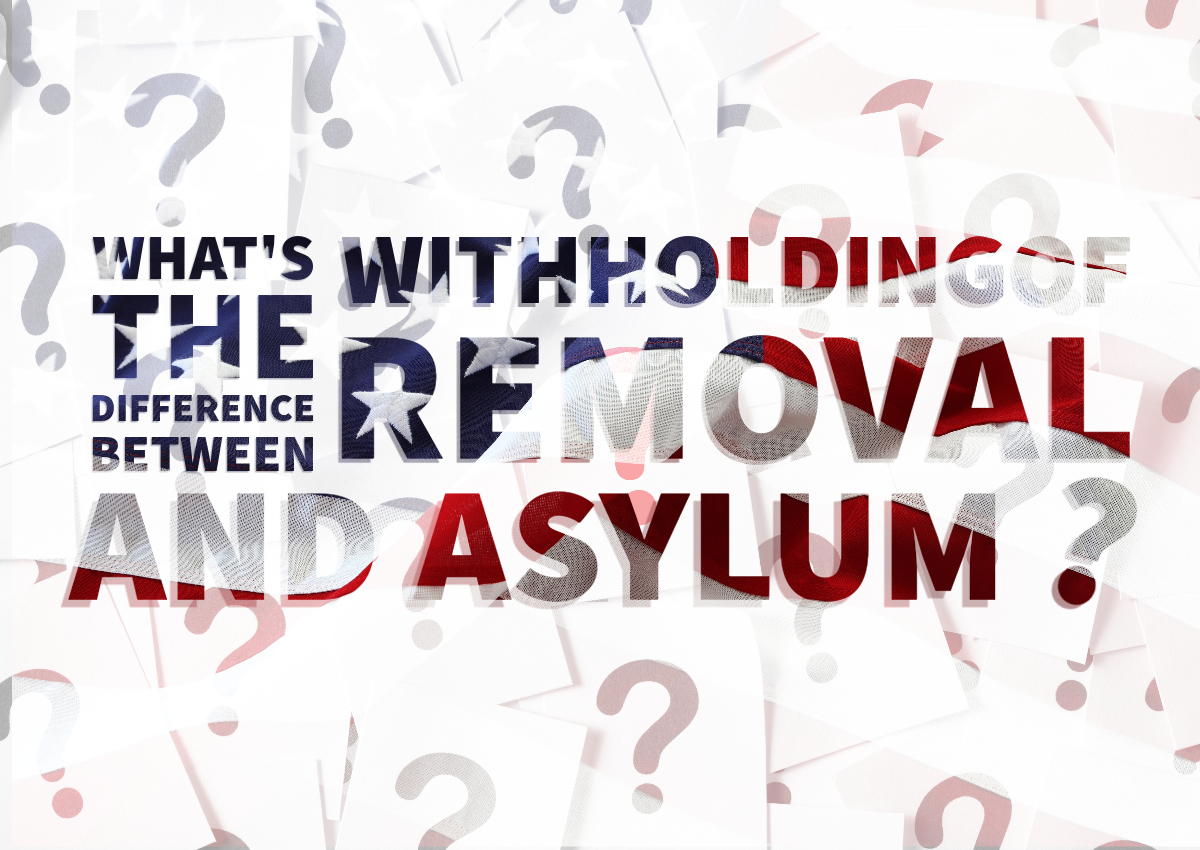For nearly a century, the United States has upheld a fundamental promise: no person shall be deported to a country where they would face persecution. In line with laws enacted to honor this commitment, tens of thousands of individuals seek protection in the United States each year. The majority of these individuals apply for asylum. Those who are granted asylum can pursue permanent residence in the United States and a pathway to citizenship. Additionally, they have the opportunity to request that their spouse and children join them in the United States.
However, not everyone is eligible to apply for asylum. For those individuals who fear persecution in their home country but do not meet the criteria for asylum, an alternative avenue for protection exists, known as withholding of removal. This form of relief is more challenging to obtain and comes with fewer benefits.
The Difference Between Asylum and Withholding of Removal
An individual granted asylum enjoys several significant benefits, including protection from being returned to their home country. They are eligible to apply for work authorization in the United States, can request a Social Security card, seek permission for overseas travel, and have the option to petition for the reunification of family members in the United States. Asylees may also qualify for certain government programs such as Medicaid or Refugee Medical Assistance.
It’s essential to understand that asylum is technically a discretionary benefit, and there are legal restrictions on who can be granted asylum. For instance, individuals who have been previously deported and subsequently reentered the United States, or those who did not apply for asylum within one year of their arrival, are prohibited from applying for asylum. In such cases, individuals who are ineligible for asylum may generally seek “withholding of removal” instead.
Much like in the case of asylum, an individual granted withholding of removal is shielded from being sent back to their home country and is granted the right to remain in the United States, where they can work legally. However, it’s important to note that at the conclusion of the court process, an immigration judge issues a deportation order, but the government is instructed not to carry out that order. In essence, the person’s “removal” to their home country is “withheld.” Nevertheless, the government retains the authority to deport this individual to a different country if that country agrees to accept them.
Withholding of removal offers a form of protection that is less certain compared to asylum, placing its recipients in a kind of limbo. Those granted withholding of removal may not leave the United States without executing the removal order. They are unable to petition for the reunification of family members in the United States, and there is no pathway to citizenship. Unlike asylum, in cases where a family seeks withholding of removal together, a judge may grant protection to a parent while denying it to the children, potentially leading to family separation.
Furthermore, withholding of removal does not provide permanent protection or a route to permanent residence. If conditions improve in an individual’s home country, the government can revoke withholding of removal and once again seek their deportation. This revocation can occur even years after the person has been granted protection.
Some individuals, including those who were convicted of “particularly serious crimes,” are not eligible for
withholding of removal. Noncitizens that are ineligible for withholding of removal are further limited to applying for relief under protection under the Convention Against Torture, a protection that is even more difficult to win than withholding of removal and that offers even fewer benefits.
How Do I Apply For Withholding of Removal?
Unlike asylum, which can be granted by asylum officers employed by U.S. Citizenship and Immigration Services (USCIS), withholding of removal is exclusively within the authority of immigration judges working within the immigration court system.
Individuals may find themselves in immigration court through various means, including an unsuccessful asylum application, apprehension within the country by U.S. Immigration and Customs Enforcement (ICE), or apprehension by U.S. Customs and Border Protection (CBP) at or near the border.
Withholding Only Proceedings
In situations where individuals with prior deportation orders are apprehended after reentering the United States, the law allows for the reinstatement of the earlier removal order. If someone with a prior removal order who fears persecution is encountered by ICE or CBP, they are not eligible for full removal proceedings in immigration court but may seek withholding of removal in what are referred to as “Withholding Only Proceedings.”
When an individual expresses a fear of persecution to an immigration officer who is considering the reinstatement of a previous removal order, the officer is mandated to initially refer the individual to an asylum officer. Those who can demonstrate to the asylum officer that they have a “reasonable fear” of persecution in their home country are subsequently sent to immigration court for a specialized form of removal proceedings, in which the only relief they may pursue are withholding of removal or protection under the Convention Against Torture.
Withholding-only proceedings represent a relatively small subset of asylum in immigration court. In recent years, between 70,000 and 80,000 asylum seekers have been referred to immigration court annually through the credible fear process.24 In total, more than 213,000 people applied for asylum in Fiscal Year (FY) 2019.
The most common pathway for individuals to enter withholding-only proceedings is through an interview conducted at the border with an asylum officer. Individuals without prior orders of deportation who can establish a “credible fear” of persecution in their home country are directed to standard removal proceedings, where they may apply for asylum. However, individuals with previous deportation orders are ineligible for asylum and face a more demanding burden of proof. If they can successfully demonstrate to the asylum officer that they have a “reasonable fear” of persecution in their home country, they are then directed to withholding-only removal proceedings, where they may seek withholding of removal, but not asylum.
Since 2012, the number of individuals found to have a credible fear of persecution has increased from
10,838 to 75,252. At the same time, the number of individuals found to have a reasonable fear of persecution and sent to withholding-only removal proceedings has increased from 916 to 3,306. The numbers demonstrate that the Government is becoming more strict in terms of determining the the noncitizen’s burden to show reasonable fear. American Immigration Counsel has a lot of great information and details about this on their website.
Is a Respondent Eligible For Release on Bond while in Withholding-Only Proceedings?
In withholding-only proceedings, the majority of individuals are detained by ICE throughout the entire process of seeking protection, and they are not afforded the opportunity to request release from a judge. ICE maintains the legal stance that individuals in withholding-only proceedings are not eligible for bond and must be held in what’s referred to as “mandatory detention.” Consequently, some individuals may find themselves in detention for extended periods, spanning months or even years, even if ICE or an immigration judge would typically consider their release.
However, it’s worth noting that in certain locations, federal courts have ruled differently, asserting that individuals in withholding-only proceedings can be eligible for release on bond. This is notably the case in the jurisdictions of the Second Circuit Court of Appeals (covering New York, Connecticut, and Vermont) and the Fourth Circuit Court of Appeals (encompassing Maryland, North Carolina, South Carolina, Virginia, and West Virginia). Immigrants in withholding-only proceedings in these areas have the option to request release from an immigration judge. The Supreme Court was set to decide on this issue in 2021, which could potentially have broader implications for this matter.


Leave a Reply